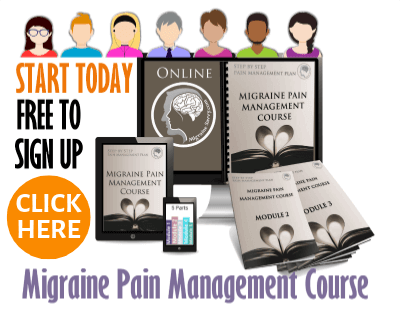- Home
- Associated Conditions
- How to Reduce Ocular Migraine Stroke Risks
Magnesium Deficient = More Migraine Attacks
Science confirms this hidden trigger.
Get all 7 forms your body actually absorbs in one bottle.
🎁Save 10% with my code!
Magnesium Deficient = More Migraine Attacks
Science confirms this hidden trigger. Get all 7 forms your body actually absorbs in one bottle +
🎁Save 10% with my code!
How To Reduce Ocular Migraine Stroke Risks
Here are some steps to help reduce ocular migraine stroke risks. If you are experiencing an ocular migraine, you become aware of a growing spot that starts off little, but continues to get bigger. It can be difficult to see the difference between this and migraine aura.
My #1 Choice in Magnesium Supplementation
Dr. Carolyn Bernstein, author of The Migraine Brain, has a warning in her book:
"Warning: if your aura lasts longer than an hour, contact your doctor. Although it's rare, this can be a sign that you are in danger of a migraine-related stroke, a very uncommon disease" (p. 97).
Another bit of confusing data increasing ocular migraine stroke risk is that it does not always have the pain phase, but in some cases, it does. We are all so different.
There are several types of migraines that can cause a variety of visual disturbances, such as hallucinations, blindness or visual auras. With the variety of symptoms that are possible, at times, a stroke could be confused with a classic migraine attack, especially if you have a history of migraines.
With ocular migraines, the pain is typically around the eye and is accompanied by symptoms such as double vision (diplopia), nausea, and vomiting. It is important to discuss this with your physician if you are concerned or at risk.
 There is a genetic link.
There is a genetic link.So what is the connection between strokes and ocular migraines? The connection between the two is relatively recent.
It's still not clear why there is a connection and how important this connection is.
The current theory is that all types of migraines increase a person's risk of having a stroke, not just ocular migraines.
Research is leaning toward the theory that there is a genetic link, which may explain why some people who suffer from ocular migraines may be at a slightly higher risk for stroke, but that this link is also between many types of migraines and dare I say regular strokes.
Individuals who suffer from ocular migraines usually suffer from the pain phase of classical migraine headaches as well. With this type of migraine, the headache pain typically comes after the irregular visual disturbances.
If you are experiencing an ocular migraine stroke, you become aware of a growing spot that started off little, but continues to get bigger and bigger.
This is sometimes followed by a colored, zigzag border. Currently, there's no known cause for this type of stroke, but theory is that it may be caused by stimulation of nerves at the back of the brain.
Here are some ways to reduce your risks.
#1. Avoid Known Triggers
The best way to deal with this is prevention.
Make every attempt to avoid factors or foods that have been known to trigger any migraine episodes.
These are more common in women, and those under the age of 40, by the way. Other conditions such as sickle cell disease, lupus, epilepsy, depression and hardening of the arteries, are also believed to be risk factors.
#2. Check with Your Doctor
Always check with your physician, especially if there is a change from what you have normally experienced in the past with your headaches or migraines.
Focus on staying healthy, lowering whatever risks you can.
Don't smoke or take illegal drugs and always check with your physician regarding medications you are already taking to evaluate the risk of any of them triggering your migraines.
Check your supplements too, just to be sure they don't interfere with any medications or something else you don't know about.
#3 Eliminate Other Causes of Ocular Migraine Stroke Risks
Your doctor will most likely order some tests to help eliminate other neurological causes like those mentioned above.
This is very important. Never just take things for granted.
S/he will eliminate risk factors like: blood clots, brain tumors and other types of strokes. Once anything serious is ruled out, you can focus on attempting to find the triggers that set off your ocular attacks.
#4. Know What to Watch For
Dr. Charles Slonim says that "the brain is our central command center for all body functions, so tumors, aneurysms, strokes and degenerative diseases can have a myriad of signs and symptoms."
It's best to seek immediate medical attention if you experience anything out of the normal, from your typical migraine attacks like:
- "A noticeable disruption of any of the five basic senses (seeing, hearing, smelling, tasting, touching).
- A sudden change in mental status, such as unusual memory loss or inability to recognize a familiar face.
- Difficulty in ambulating, which includes walking in a straight line or standing in place without falling.
- Difficulty in communicating, such as slurred speech."
#5. Reduce Stress Where Possible
Stress is always considered a trigger for migraines, so make an effort to stay away from stressful situations where humanly possible.
Your lifestyle choices can definitely effect the occurrence of your migraine attacks. Exercise regularly, get plenty of rest, stay well hydrated and enjoy yourself as often as you can.
And learn some relaxation techniques. Here are a few articles I've already written that you can experiment with:
- an easy migraine relaxation method
#6. Educate Yourself
If you have ocular migraines, like I do, and you are more at risk of having an ocular stroke, educating yourself more on your diagnosis is a wise option. Ask your doctor for more information and ask questions until you understand.
If you'd like to read more on strokes, here are my other articles:
- Migraine Stroke Symptoms: What to Watch For - to recognize your symptoms.
Knowing what to watch for can reduce your anxiety!
To educate yourself and stay on top of things... stay in touch.
Join my list and you can instantly download 5 things you can use every day to help prevent and manage your attacks.
BE INFORMED. STAY INFORMED. JOIN THE MAILING LIST.
More Prevention Tips
Here are some of the things I do to help prevent any future attacks and reduce any ocular migraine stroke risks:
- Exercise regularly. I do Yoga for my eyes, Tai chi, and I walk;
- Wear tinted glasses. FL41 from Theraspecs are good;
- Drink lots of water and balance it with salt and minerals;
- Use the techniques in my book to keep my stress levels down;
- Meditate as often as I can;
- Do my migraine physiotherapy every day if possible.
Stay well,
Hx
WANT MORE TIPS? Subscribe to my newsletter and follow along on Facebook and Pinterest for all of the latest updates.
ASSOCIATED CONDITIONS Related Articles
How to be more MIGRAINE SAVVY right now...
References for Ocular Migraine Stroke Risks:
1. Bernstein, Dr. C. (2008) The Migraine Brain. Pocket Books: NY. (p. 97).
2. Slonim, Dr. Charles (2015) Ocular Migraines. [Online] Available: http://www.allaboutvision.com/conditions/ocular-migraine.htm




















